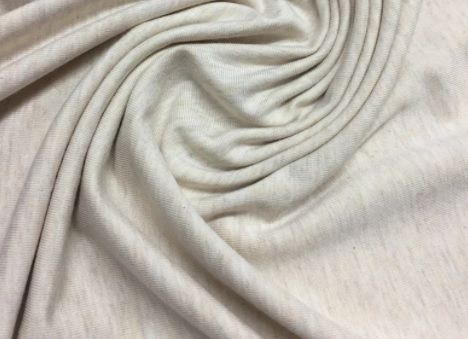Good News On Choosing Bamboo Clothing
Wiki Article
What Is The Sustainability Of Hemp In Comparison To Cotton In Terms Of Water Use, Pesticides And Herbicides?
There are many reasons why hemp is thought to be a more sustainable and eco-friendly crop as compared to cotton when it comes to water use, pesticides, and herbicides.
Hemp- Hemp has a relatively low water requirement compared to other crops such as cotton. It's a drought-resistant plant that grows without water. Hemp is able to be grown in numerous regions with rainwater only, which makes it a water-efficient option.
Cotton- Combed cotton is renowned for its extensive use of water. The cultivation of cotton often requires extensive irrigation which could deplete local water resources and lead to the water crisis in regions that are stressed by water. The cultivation of cotton is a water-intensive operation that raises questions about its sustainable nature.
Pesticides and Herbicides-
Hemp: Hemp has a natural resistance to numerous insects. This means that it is less need for synthetic pesticides. The use of chemicals in hemp is less than other crops such as cotton. The hemp organic cultivation is pesticide-free.
Cotton- Conventional cotton farming heavily relies on pesticides that are synthetic. Herbicides can also be used to eliminate weeds. These chemicals may cause negative environmental consequences including soil and water pollution and harm to species that are not targeted and the development pesticide-resistant insects.
In the end hemp is more sustainable than cotton, with respect to pesticides, herbicides used, water usage and irrigation.
Hemp generally requires less water and can be grown with minimal watering or irrigation.
Hemp is naturally invulnerable to diseases and pests This helps reduce the need for pesticides.
Hemp crops need less synthetic herbicides and pesticides when compared with conventional cotton.
However, it is crucial to know that environmentally sustainable methods may differ among cultivators and in various regions. The organic farming method can also help in the sustainable use of hemp as well in cotton, by reducing the use of synthetic chemicals and enhancing soil health. In assessing the environmental impact of textiles and clothing, selecting organic and sustainably made fibers, such as cotton or hemp, could contribute to reducing the ecological footprint of the fashion industry. Read the top visit website about hemp clothes for site recommendations including hemp t shirts wholesale, hemp golf shirts, hemp boxer shorts, hemp button down shirt, hemp athletic wear, jungmaven t shirt, t shirt hemp, hemp work pants, afends jesse dress, hemp t shirts wholesale and more.

What Makes Hemp Clothing Superior In Terms Of Functionality And Performance Than Traditional Fibres.
Hemp clothing is an eco-friendly alternative that provides many functional and technical benefits over conventional fibers. Hemp clothing has numerous advantages which make it an ideal green and high-performance alternative.
Hemp fibers are extremely absorbent and moisture-wicking. This makes hemp clothing suitable for wearing in a variety of climates. They can help you stay dry and cool, and stop the growth of bacterial.
Regulation of Temperature Regulation-
Hemp clothing has excellent thermoregulatory properties. Hemp clothing will help to keep you warm by trapping heat near the body, and cool you down in hot weather by allowing heat and moisture to be able to escape. The natural way to regulate temperature can reduce the need for frequent changes in clothing.
Durability-
Hemp fibers are known for their durability. Hemp clothing is known to be more durable and resistant to wear and durable than some traditional fibers. Hemp clothing is sturdy, which means that they are able to last longer and lessen the need for replacements and, consequently, their environmental impact.
UV Protection-
Hemp fibers protect the skin from UV radiation, providing the skin with UV protection. This feature can be especially advantageous for outdoor activities as well as sports.
Biodegradability:
Hemp clothing breaks down in time. It is a great way to reduce textile waste and its impact on the environment.
Low Environmental Impact
Hemp cultivation is less dependent on synthetic pesticides as compared to cotton. The hemp plant uses less water and is therefore more sustainable for the environmental. This green aspect is further improved by organic farming.
Carbon Sequestration
Hemp plants have the capacity to capture carbon dioxide in the atmosphere while they expand. The hemp plant is cultivated as a carbon-sink, which aids in reducing the level of greenhouse gases.
Sustainable Crop Rotation
Hemp can be integrated into rotations of crops to improve soil health, reduce the risk of disease and soil loss. The hemp's environmental impact is enhanced through this method of sustainable farming.
Versatility:
For the creation of blends of fabrics that are high-performance and eco-friendly hemp fibers can be incorporated with other materials such as organic cotton and recycled Polyester. This versatility allows the creation of novel textile products.
Low Toxicity
Hemp fibers are low-toxic in nature and do not require an extensive chemical process in the process of manufacturing, can reduce the impact on the environment.
In addition to hemp's many functional and eco-friendly benefits, it is important to be aware that the sustainability of clothing may be affected by other elements such as dyeing methods, transportation, or ethical labour practices. To make eco-conscious decisions, shoppers can search for clothing brands that emphasize the environment, transparency and ethical manufacturing practices and hemp, or other sustainable fibers. View the most popular visit website for hemp clothing for blog recommendations including mens hemp clothing, hemp yoga clothes, hemp polo shirts, jungmaven sweatshirt, hemp fabric, hemp apparel fabric, hemp boxer shorts, hemp polo shirts, hemp long sleeve shirt, american made hemp clothing and more.

What is the difference in bamboo and hemp fibers?
Two different fibers, bamboo and hemp both are utilized in textile production. Each has its own properties and distinctive characteristics. These are the main differences between bamboo and hemp fibers. Plant Source-
Hemp Fibers- Hemp fibers can be made from hemp stalks, more specifically, the bast that is outside. Hemp is an adaptable and rapid-growing plant that has been used in a variety of ways over the years.
Bamboo fibers can be produced out of the pulp made by the bamboo plant. Bamboo is recognized as a species of grass with rapid growth and for its ability to regenerate rapidly.
2. Fiber Characteristics
Hemp Fibers- Hemp fibers have a reputation for durability and strength. They're one of the strongest fibers found in nature and get softer each wash, which is why they make great textiles.
Bamboo Fibers- Bamboo fibers are known for having a soft, silky feel. They're not as sturdy as hemp fibers and can be more fragile, however they are valued because of their softness against the skin.
3. Texture-
Hemp- Hemp fabrics have a textured, slightly coarse feeling when they are in the natural state. It is a comfortable fabric, but it has a different texture to bamboo.
Bamboo- Bamboo fabric is smooth, silky, and luxuriously soft. It's often described as being a mix of cotton and silk, which makes it extremely comfortable to wear.
4. It is vital to breathe in addition to moisture wicking.
Hemp- Hemp is naturally breathable. It also absorbs moisture. They can help keep your body dry and cool in hot conditions.
Bamboo is also very ventilated, and it also wicks away moisture. They are brimming with micro-gaps, which enhance their ability to regulate humidity and temperature, which keeps you at ease in all conditions.
5. Environmental Impact-
Hemp Hemp is considered an eco-friendly fiber because of its rapid growth, its low need for water as well as its resistance to insect bites, which reduces the need to apply pesticides. It can also sequester carbon from the atmosphere during its expansion.
Bamboo- Bamboo is famous for its long-lasting nature. It grows quickly, needs little water and is easy to grow without pesticides that are synthetic. Some bamboos are regarded as sustainable, including Moso bamboo.
6. Processing-
Hemp- Hemp requires extensive processing to separate its outer bast fibers (outer woody core) from the woody inner fibers. The process may require Retting (decortication) or mechanical separation or Retting.
Bamboo Fibers- Bamboo fibers are produced through a chemical process referred to as the viscose/rayon procedure. This is accomplished by using chemicals to break the bamboo into a pulp. If it is not managed properly the process can be detrimental to the ecosystem. Some bamboo fabrics use closed loop systems to minimize waste.
7. Versatility-
Hemp Fibers- Hemp fibers can be used for a variety of applications, including textiles, clothing, paper, and building materials.
Bamboo The bamboo fibres are used mostly in textiles and clothing, but they can also be found in other items like bedding, towels and even towels.
Both bamboo and hemp possess distinct characteristics and provide sustainable benefits. The choice of which one to choose is contingent on the particular qualities and characteristics you want in a textile product and your environmental preferences. Read the most popular bamboo clothing for site recommendations including kyte pajama, women's freefly apparel, freefly summer hoodies, bamboo clothing underwear, rayon from bamboo fabric, bamboo twirl dress, bamboo jeans, dixxon bamboo shirt, bamboo clothing underwear, bamboo sweatpants and more.
